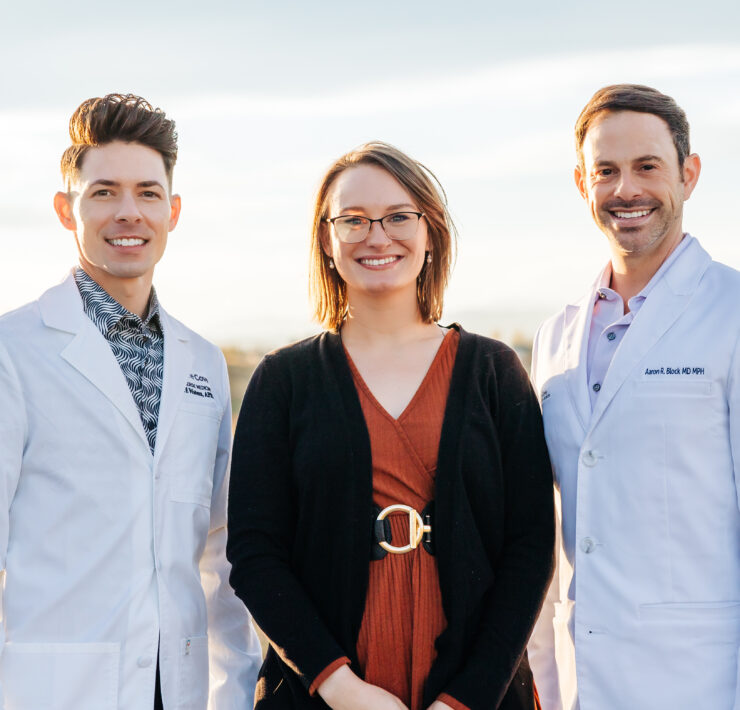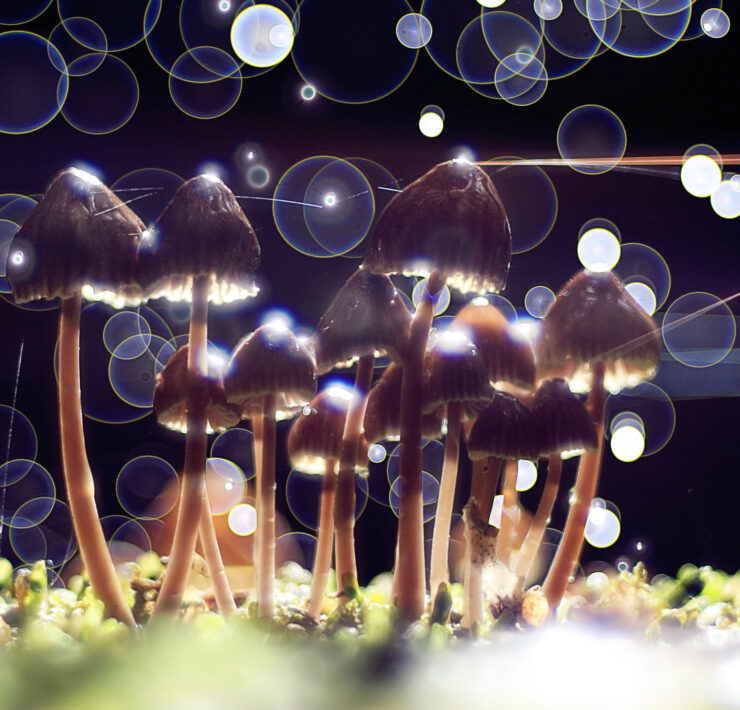The Psychedelic Boom and Social Equity: Colorado and Beyond

Keegan (they/them) is a journalist/artist based in Los Angeles.
As cannabis continues its boom across the United States and beyond, with states across the country continuing to ease criminal penalties and usher in a new era of legal medical and recreational cannabis, the phrase “social equity” often comes up.
In an effort to right the wrongs of the War on Drugs and its effects on communities of color, lawmakers are attempting to write their policy to inherently include historically disenfranchised communities. It’s been met with mixed reception in states around the country, as advocates wonder if the new reform measures are truly doing enough to put these communities at the forefront of the legal cannabis movement.
It has also ushered in another conversation surrounding the use of psychedelics, especially focused on how psychedelic medicine can be used to aid mental health treatments. Denver was arguably one of the regions that signaled the psychedelic revival in the U.S. and beyond, as it decriminalized psilocybin back in 2019.
The cannabis industry today, despite equity measures, is often headed by large companies with heavy wallets and white folks; many people are still serving prison time for nonviolent cannabis offenses while professionals turn profits doing the same thing.
This leaves psychedelic activists wondering how psychedelic reform can incorporate equity, especially given the rich history of psychedelic medicine among Indigenous communities.
To answer that question, we chatted with Shelby Hartman, the co-founder and CEO of DoubleBlind, a biannual print magazine and media company focusing specifically on psychedelics and the untold stories surrounding their use as this modern-day boom persists.
Getting Up to Speed: A Primer on Psychedelics and Their Place Today
To understand where we are today, it’s helpful to look back at where we’ve been.
While psychedelic drugs include a wide variety of natural plants and synthesized substances, one of the main players in the conversation is psilocybin, the psychedelic
component of “magic mushrooms.”
A comprehensive 2021 report from the Psilocybin Mushroom Policy Review Panel, prepared for the Denver City Council, dives further into the history of psilocybin, noting the human settlements dating back to at least 500 B.C. and as far back as 9000 B.C., have used psilocybin mushrooms. Psilocybin is found in more than 200 varieties of mushrooms, occurring naturally on every continent but Antarctica.
Psilocybin is known for its capacity to “induce states of altered perception,” a feeling that folks may not otherwise be able to reach, though it does not cause physical addiction, cravings, major psychological disturbances, delirium, or amnesia. The effects generally last four to six hours depending on the dose.
It’s been historically recognized not only as a source of nutrition but as a way for people to address individual and communal psychological and social issues. Psilocybin wasn’t reintroduced to the West on a broader stage until the 1950s, when investment banker and amateur mycologist Robert Gordon Wasson published his photo essay, “Seeking the Magic Mushroom,” in LIFE magazine. He recalls his participation in a ritual with María Sabina, the first contemporary Mexican curandera who allowed Westerners to participate in the purification and communion ceremony, velada. Following psilocybin’s growth in popularity through the 60s, The Controlled Substances Act of 1970 classified them as a Schedule I drug, which not only halted the legal, ceremonial use of the substance but also stopped the successful university-level research that was working to prove the safety and efficacy of psilocybin-assisted therapies.
Denver approved a city ordinance to decriminalize psilocybin with Initiated Ordinance 301, the Denver Psilocybin Mushroom Initiative, by less than 2,000 votes in 2019. Since then, California cities like Oakland and Santa Cruz made the “planting, cultivating, purchasing, transporting, distributing, possession or use” of entheogenic compounds the lowest law enforcement priority.
(Note that these laws are broader than Denver’s applying to all entheogens including ayahuasca, iboga, psilocybin, and any other forms of psychedelic compounds derived from cactus, plant or fungus.)
Oregon also made history in November 2020 as voters passed the Oregon Psilocybin Program Initiative, allowing for limited licenses for manufacturing psilocybin products, facilitating psilocybin services, and for testing psilocybin products. The Oregon Health Authority is now working to develop standards to provide these services to adults 21 and older, and licenses are expected to be issued this year.
Even with this small sample, the approaches around psychedelic reform vary abundantly, so how does that translate to conversations surrounding equity? Spoiler alert: It’s not a simple answer.
Breaking Down the Current Psychedelic Movement
Moving forward and looking at equity specifically can be challenging because there are many different factions within the psychedelic movement and a lot of varying opinions of the best way for this to unfold, Hartman says.
One major difference between psychedelics and cannabis in this regard is that many saw decriminalization of cannabis as the first steps toward legal cannabis: first decriminalization, then medical legalization, then recreational legalization. Hartman notes the psychedelic movement has a lot of activists who are promoting decriminalization as an alternative, or even in opposition, to the FDA-approved, drug-development model.
“There’s this idea that, if you can grow mushrooms in your house and not be prosecuted for it, then that is going to be the best way to ensure that people can have access to this medicine, and they can take it how they want to take it rather than having to go through a doctor, get a prescription, maybe it will or won’t be covered by insurance,” Hartman says.
Activists are also pushing for the broader decriminalization of all drugs. Hartman says, when we solely focus on the psychedelic community, it often includes some of the most privileged, so when we begin putting resources and money toward decriminalizing only psychedelics, it can actually exclude a lot of people who are being criminalized for their use of other drugs that are not considered “psychedelics.”
“Oregon decriminalized all drugs at the ballot box in November, and that was seen as a huge win for the broader criminal justice movement, as opposed to a lot of the initiatives we’re seeing now which are focused specifically on not just the decriminalization of psychedelics but decriminalization of ‘natural’ psychedelics,” Hartman says, nodding to Oakland and adding this model is “proliferating the fastest across the country.”
Other activists are looking to decriminalize all psychedelics, saying that we’re potentially creating an arbitrary distinction between what’s natural and what isn’t.
In conversations surrounding equity, Hartman says we must think about who will actually be able to access these medicines for healing and how we can correct the harm caused by the War on Drugs, “so that we don’t end up in a situation where cannabis is legal and all these people can buy it at their dispensary, but there are still tons of people who are incarcerated for doing exactly what people are making millions of dollars doing now,” she says.
In terms of drug development and accessibility, it sometimes takes hundreds of millions of dollars to move a single drug through development and FDA approval. If we look at psychedelics in a for-profit context, it means that pharmaceutical companies will need to answer to investors, who expect a return on their investment when that drug gets to market, which in turn affects the pricing and accessibility.
Hartman says there’s a lot of debate in this regard in terms of equity and access. Should we mandate all psychedelic pharmaceutical companies researching these substances be nonprofits or benefit corporations, whose values prioritize access over profit? In reality, is it even doable for nonprofits exclusively to raise enough money to move a drug through the FDA-approval process?
Companies like Journey Colab have built Indigenous reciprocity into its model, creating a trust that holds 10 percent of the company’s founding equity, designated to share its success with community stakeholders, including Indigenous communities, “to increase equitable access to care and recruit employees and partnerships,” its website states.
Hartman notes that the Multidisciplinary Association for Psychedelic Studies (MAPS) came under heat in recent years because they established a for-profit arm, but it’s a benefit corporation, with the continued aim to innovate their model and increase access. The long-term results of this move remain to be seen, and Hartman harps on the fact that, once again, this conversation is complicated.
“We can talk all day long about like equity and access and reciprocity, but when it comes down to the mechanics of actually creating a business that centers these values, and also can operate and have the resources and capital necessary to scale within this inherently oppressive economic paradigm that we’re all a part of, it’s very challenging.”
Psychedelics in the Midst of Cannabis Reform and the Road Ahead
While cannabis reform is still in progress, and far from perfect, Hartman says that she’s unsure if we would be having the same conversations around equity and access if the cannabis industry hadn’t come first and experienced its own growing pains. Part of this is because of the overlap between the two communities.
“There’s a lot of the activists who are involved in the decriminalization stuff who were involved in, or still are involved in, the cannabis industry in some capacity,” Hartman says. “Also, I think almost every attorney that I know of—who is doing really smart, interesting work around this in the psychedelic space—also does cannabis law, and also has been involved in this since before most states legalized medical marijuana.”
Both are historically stigmatized plants and fungi with a history of ceremonial use, and those who care about access and equity don’t want to see either overregulated. Though, the two have very different uses that must be taken into account when we talk about opening availability to the broader public. Generally speaking, a person can smoke some weed and still function, but taking a certain amount of psychedelics is usually a different story. In that way, Hartman says the systems will need to be different, including the types of public education that we put into place surrounding psychedelics.
Colorado is making moves to pave the road ahead, with Decriminalize Nature Boulder submitting a ballot initiative to decriminalize entheogenic plants and fungi (not including peyote) statewide back in January. The group says the decriminalization initiative will open the door to increased opportunities for dialogue, research, and education that will help to inform future policy surrounding these medicines.
Proponent and activist Nicole Foerster specifically references the initiative as a stride toward equity: “Without decriminalization and the security it allows for affected communities to more effectively organize, regulatory models will make it difficult for the most disadvantaged groups of our population to continue to access the natural medicines they safely use to heal. To address this, we are advocating for a simple change to existing laws around these controlled substances.”
As exciting as it can be, looking at the strides in research, the success stories surrounding psychedelic-assisted therapy and the ease of PTSD and symptoms surrounding treatment-resistant depression and more, Hartman says psychedelics aren’t a panacea; they aren’t for everybody, and they won’t fix your problems overnight.
“That’s literally why we started DoubleBlind, and we have so many articles, courses, and webinars for folks who are interested in doing shrooms, microdosing—Whatever anyone’s interested in, we’re just a wealth of free information, and we’re always available to support people.”
This conversation can also intersect with folks in the LGBTQ community, whether a person is coming into their identity or struggles with their family or friends’ acceptance. Hartman says that psychedelics can potentially show promise for the issues queer people often face, or are more prone to. Though, she notes there’s a lot more that must be explored surrounding the intersections of psychedelics and queerness.
“Just because psychedelics help like people in the general public who have treatment-resistant depression doesn’t mean that they’re necessarily going to help people who are queer, who have depression that’s caused by very particular circumstances, but I’m hopeful, and there are definitely cool communities and retreat centers and things that are popping up to support people who are queer. Hopefully we’ll just begin to see more and more of that.”
For more psychedelic information and resources, check out DoubleBlind at doubleblindmag.com or on Instagram @doubleblindmag.
What's Your Reaction?
Keegan (they/them) is a journalist/artist based in Los Angeles.










